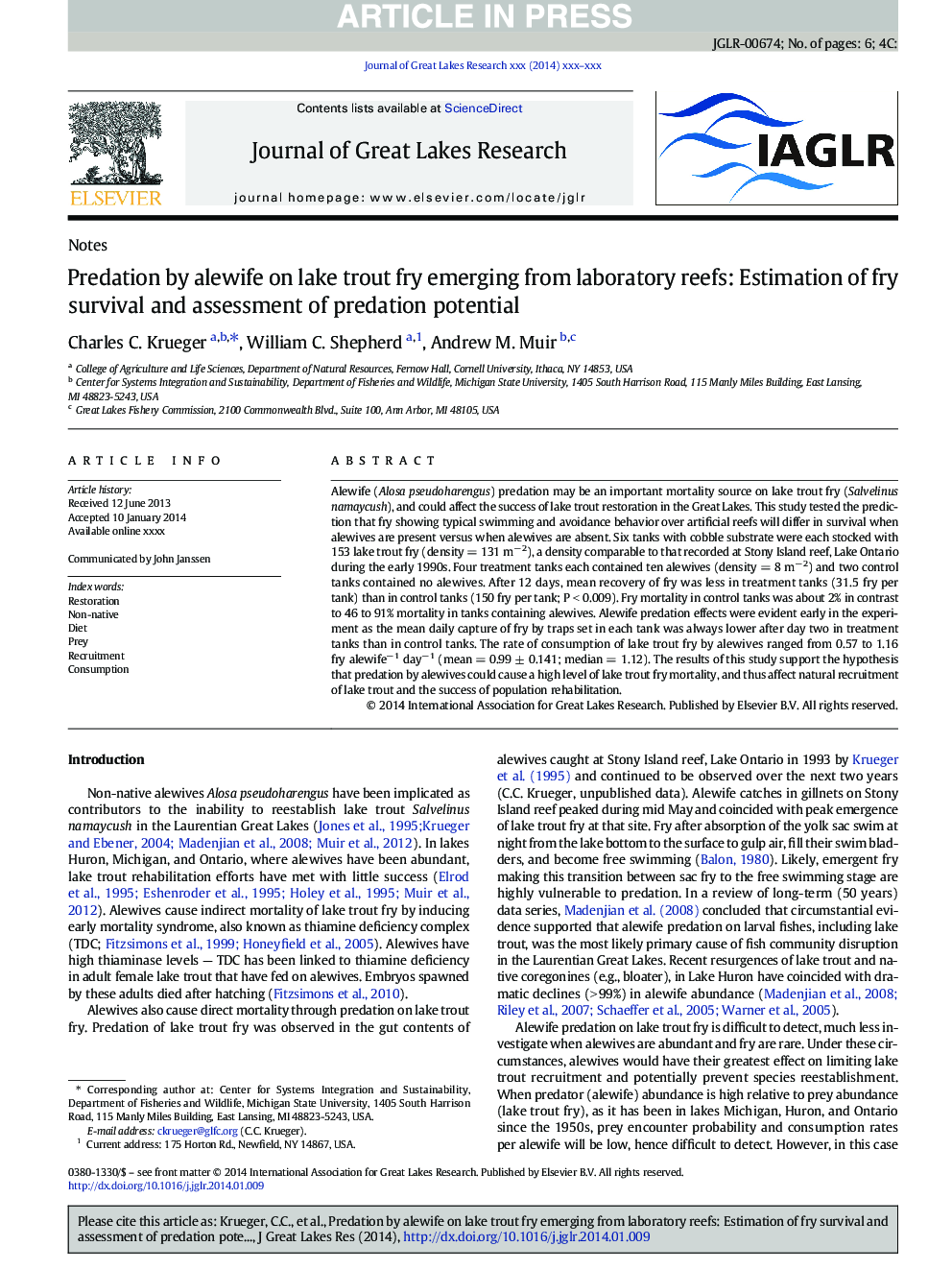| Article ID | Journal | Published Year | Pages | File Type |
|---|---|---|---|---|
| 6305241 | Journal of Great Lakes Research | 2014 | 6 Pages |
Abstract
Alewife (Alosa pseudoharengus) predation may be an important mortality source on lake trout fry (Salvelinus namaycush), and could affect the success of lake trout restoration in the Great Lakes. This study tested the prediction that fry showing typical swimming and avoidance behavior over artificial reefs will differ in survival when alewives are present versus when alewives are absent. Six tanks with cobble substrate were each stocked with 153 lake trout fry (density = 131 mâ 2), a density comparable to that recorded at Stony Island reef, Lake Ontario during the early 1990s. Four treatment tanks each contained ten alewives (density = 8 mâ 2) and two control tanks contained no alewives. After 12 days, mean recovery of fry was less in treatment tanks (31.5 fry per tank) than in control tanks (150 fry per tank; P < 0.009). Fry mortality in control tanks was about 2% in contrast to 46 to 91% mortality in tanks containing alewives. Alewife predation effects were evident early in the experiment as the mean daily capture of fry by traps set in each tank was always lower after day two in treatment tanks than in control tanks. The rate of consumption of lake trout fry by alewives ranged from 0.57 to 1.16 fry alewifeâ 1 dayâ 1 (mean = 0.99 ± 0.141; median = 1.12). The results of this study support the hypothesis that predation by alewives could cause a high level of lake trout fry mortality, and thus affect natural recruitment of lake trout and the success of population rehabilitation.
Related Topics
Physical Sciences and Engineering
Earth and Planetary Sciences
Earth and Planetary Sciences (General)
Authors
Charles C. Krueger, William C. Shepherd, Andrew M. Muir,
